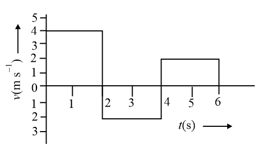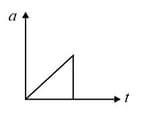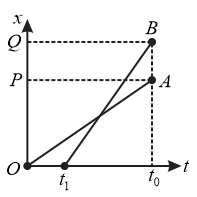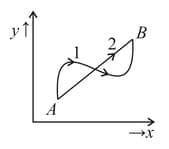BM Sharma Solutions for Chapter: Motion in One Dimension, Exercise 6: DPP
BM Sharma Physics Solutions for Exercise - BM Sharma Solutions for Chapter: Motion in One Dimension, Exercise 6: DPP
Attempt the free practice questions on Chapter 4: Motion in One Dimension, Exercise 6: DPP with hints and solutions to strengthen your understanding. Chapterwise/Topicwise Daily Practice Problems (DPP) Mechanics I JEE Main & Advanced solutions are prepared by Experienced Embibe Experts.
Questions from BM Sharma Solutions for Chapter: Motion in One Dimension, Exercise 6: DPP with Hints & Solutions
The velocity-time graph of a body moving in a straight line is shown in the figure. The displacement and distance travelled by the body in are respectively

The acceleration-time graph of a body is shown below.

The most probable velocity-time graph of the body is
A ball is thrown vertically upwards. Which of the following graph/graphs represent velocity-time graph of the ball during its flight (air resistance is neglected)?
A ball is thrown vertically upwards. Which of the following plots represents the speed-time graph of the ball during its 'time of flight ', if air applies a constant resistance force?
A batsman hits a six and the ball touches outside the cricket ground. Which of the following graph describes the variation of the cricket ball's vertical velocity with time between the time as it hits the bat and time when it touches the ground?
The velocity displacement graph of a particle moving along a straight line is shown in the figure.

Then, the acceleration displacement graph is
The position-time graphs for two children and returning from their school to their homes and respectively, along the straight line path (taken as -axis) are shown in figure.

Choose the correct statement(s):
A particle can travel from point to from two different paths and as shown, in same interval of time. Then, which of the following is incorrect?

